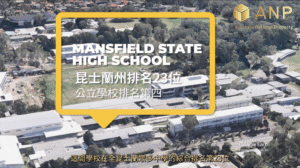什麼是「溫和密度」? 這個住宅流行語可能是昆士蘭社區關鍵的住房解決方案
閱讀時間:3分鐘 分享: 許多昆士蘭社區已經在面對他們郊區的迅速變化,而「低密度、高密度和中密度」等術語經常被提及。但有一個術語,“溫和密度”,被描述為解決住房供應問題的黃金公式。
但在密度的語境中「溫和」意味著什麼? 作為一個城市發展術語,溫和密度著重於在現有的單一獨立住宅區輕微增加房屋的數量和類型。傳統的低密度分區通常包括有單一住宅的大型地塊,導致寶貴的土地資源未能充分利用。
溫和密度還可以是對現有地點的再開發,以包括多單位住宅如三合院、四合院或填充式排屋。這優化了土地使用,提供了多種住房類型,而不改變社區的特色和感覺。
城市規劃師兼Churchill Fellow的CIVITY董事馬丁·加勒德(Martin Garred)表示,與其在缺乏基礎設施的城市外圍擴展新開發項目,溫和密度意味著在現有的人口密集地區建造更多的聯排別墅、微地塊住宅和三合院,以容納昆士蘭日益增長的人口。
“溫和密度的概念實際上是關於在我們的社區成長和發展時考慮代際變化,”馬丁說。
“在理想的世界裡,我們希望每個人在他們生命的不同階段都能找到適合他們的住房。當你退休時,你希望能夠留在你一生中居住的郊區,但搬進一個更小、更易於管理的地方。”
應對住房可用性的歐洲方式 通過與溫斯頓·丘吉爾紀念信託基金的合作,馬丁調查了英國、丹麥和瑞典的不同住房方法。那麼,我們能從歐洲的不同住房方式中學到什麼呢?顯然,一切都從心態開始。
“世界各國如何應對住房負擔能力危機,真正凸顯了我們需要在澳洲改變我們的心態,”他說。
“作為消費者,我們並未必然接觸到除了單家庭住宅或非常大的公寓樓以外的住房,”
“在歐洲和世界其他地區的區別是,主要的歐洲城市一直在探討如何創造不同類型的房屋,並積極討論他們的需求。”
根據馬丁的說法,澳洲的土地使用分區方法影響了住房選擇,限制了供應並推高了價格。
開始一場對話 常言道,沒有成長就沒有變化。
除了保持社區團結、居住地養老和住房可負擔性外,溫和密度還帶來了一系列社會利益。
不僅擁有更多鄰居有利於建立社區聯繫和社會凝聚力,而且還會導致對公園、社區基礎設施和文化區等的投資。
儘管許多昆士蘭人今天面臨挑戰,馬丁說我們需要首先與社區成員開始對話。
“我想我的行動呼籲是,當你下次在後院的燒烤聚會上,談論住房,談論你可能想居住的不同類型的住房,因為我認為我們面臨的第一個問題是,我們所有人都必須就昆士蘭未來的住房面貌進行一種集體討論,”他說。
“所以我們現在做出的決定對我們未來的世代非常重要,確保我們現在面對的住房危機這些遺留問題,我們不會留給未來也是至關重要的。”
隨著昆士蘭繼續成長和變化,昆士蘭政府正與市議會和行業合作,規劃和提供最需要的住房,為所有人創造宜居社區。了解更多:https://www.statedevelopment.qld.gov.au/planning/housing
How a housing buzzword might be the key housing solution for Queensland communities
Many Queensland communities are already dealing with rapid change in their suburbs, and phrases like ‘low, high and medium density’ are often thrown around. But one term, “gentle density” has been described as the golden formula to solving housing supply issues.
But what does ‘gentle’ mean in the context of density?
An urban development term, gentle density focuses on slightly increasing the number and variety of homes in existing single detached-home neighbourhoods. Traditional low density zoning often consists of large lots with a single home leading to underutilisation of valuable land resources.
Gentle density can also be the redevelopment of an existing site to include multiplexes like triplexes, fourplexes, or infill row houses. This optimises land use and offers a variety of housing typologies without changing the neighbourhood’s character and feel.
CIVITY director, town planner and Churchill Fellow, Martin Garred, says that rather than expanding new developments on the outskirts of cities that lack infrastructure, gentle density means building more townhouses, micro-lot houses and triplexes in existing populated areas to accommodate Queensland’s booming population.
‘The concept of gentle density is really about looking at generational change as our communities grow and evolve,’ Martin said.
‘In a perfect world, we want everyone at different stages of their lives to find housing that suits them. As you retire, you want to be able to stay in the suburb which you’ve lived in your whole life but move into something smaller and more manageable.’
The European way of tackling housing availability
In collaboration with the Winston Churchill Memorial Trust, Martin investigated differing housing approaches in Britain, Denmark and Sweden. So, what can we learn from housing done differently in Europe? Apparently, it all starts with mindset.
‘The way different countries around the world are dealing with the housing affordability crisis really highlights how we need to change our mindset here in Australia,’ he said.
‘As consumers, we haven’t necessarily been exposed to housing other than single family homes or really large apartment buildings,’
‘The difference in Europe and other parts of the world, major European cities have been looking at how they can create different types of houses and are actively having conversations about their needs.’
According to Martin, Australia’s land use zoning approach impacts housing choice, restricting supply and increasing prices.
Starting a conversation
It’s often said that change doesn’t happen without growth.
Aside from keeping communities together, ageing in place and housing affordability, gentle density carries a range of social benefits.
Not only is having more neighbours beneficial for building community connections and social cohesion, but it also leads to investment in things like parks, community infrastructure and cultural precincts.
Despite challenges facing many Queenslanders today, Martin says we need to start a conversation with community members first.
‘I think my call to action to the communities, when you go to the next barbecue in your backyard, talk about housing, talk about the different types of housing that you might like to live in, because I think the first issue that we have is we all have to have a collective kind of discussion around what the future of housing looks like in Queensland,’ he said.
‘So the decisions that we make now are really important for our future generations, and it’s critical that we make sure that some of the legacies that we’re dealing with now in terms of the housing crisis, that we don’t leave that for the future as well.’
As Queensland continues to grow and change, the Queensland Government is working with councils and industry to plan for and deliver housing where it is most needed and to create liveable communities for all to enjoy. Find out more: https://www.statedevelopment.qld.gov.au/planning/housing







